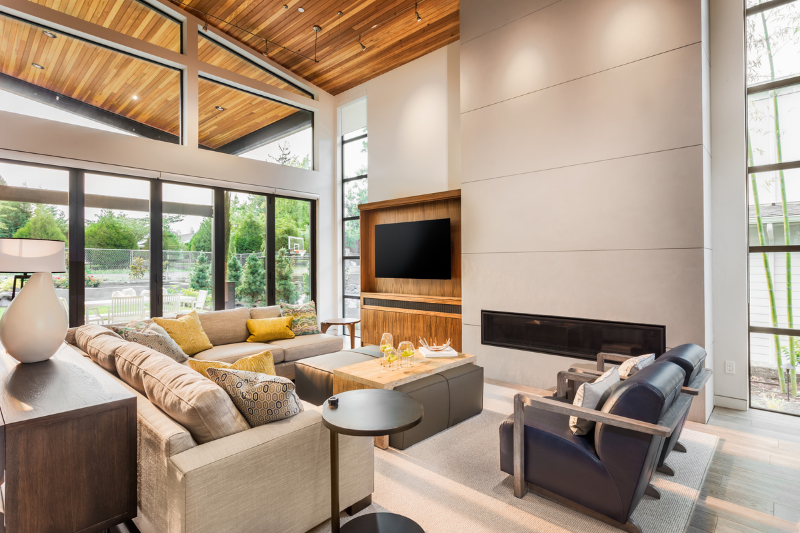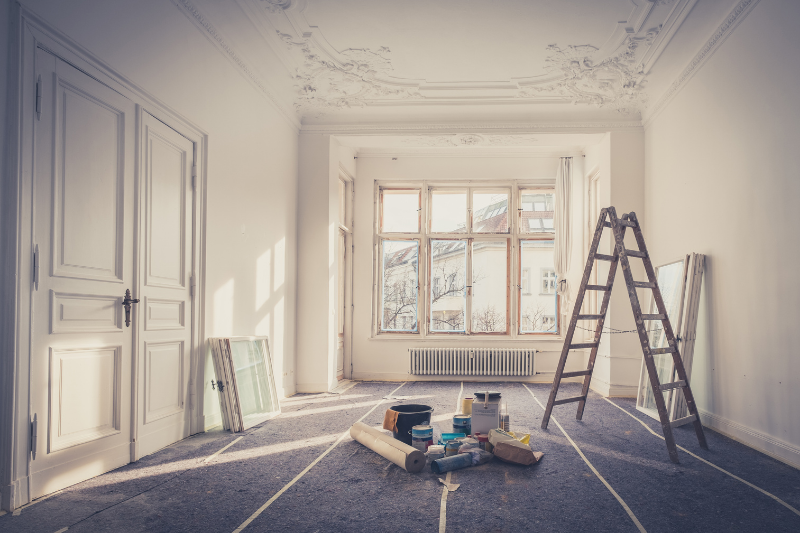For many first-time homebuyers, one of the common challenges is the amount of money needed…

Buy New Or Renovate An Existing Home?
When it comes to buying a home, there’s many aspects to consider: location, square footage, yard space and your budget to name a few. While considering these factors, one major question will likely come to mind: should I buy new or should I renovate an existing home?
While we cannot ultimately tell which option is best for you, we’ve put together some of the pros and cons to help you make the best decision.
Buying New
Three words…MOVE-IN READY! One of the top pros to buying a turnkey house is just that: you can simply put your key in the door, turn it and walk straight into a move-in ready space. No need to start on home projects like ripping out the bathroom vanity—the biggest task you have to do is unpack your moving truck and start cozying up your space. Since it’s a newer home, you should also have minimal repairs that need to be done, if any, for at least a few years down the road. Another advantage? New homes tend to be way more energy efficient than most fixer-uppers as technology has advanced through the years and higher standards are required for items such as windows, insulation, appliances, etc. The downside to buying new? The price tag may be steeper than an older, existing home due to the convenience of being able to move right in, higher quality construction materials the home was built with and the amount of updated home features. Not only that, but your new home may not be your exact “dream” home. While you’ll likely be able to check a lot of boxes off on your list, you won’t be able to design each and every element from the floorboards up to your liking without renovating (even if you’re buying a new construction home, you’re often limited in options).
Renovating An Existing Home
The number one advantage? CUSTOMIZATION. When renovating an existing home, you have free rein when it comes to how you want your home to look. Why be stuck in a box with the pre-chosen oak cabinets or the four flooring options you might be given to choose from when buying new construction when you could have complete design freedom?! On top of that, existing homes often have one element you can’t tack on with the purchase of a new home: charm (like the charm of the original stone fireplace in the home or the crown moldings). While you will have a to-do list right off the bat of moving in instead of just being able to unpack and unwind immediately, you could rack up quite a bit in savings by buying a pre-existing, fixer upper home. Not only do these homes tend to be lower in price per square foot than a newer home, but you may potentially be able to save on property taxes and may even be able to get seller credits added on to help cover the cost of some of the repairs as well. Although there’s nothing quite like the feeling of accomplishment once you finish a fixer-upper project, you do run the risk of happening upon these two major downsides when purchasing an existing home to renovate: labor costs and unexpected issues. Even if you get a home inspection and a rough estimate of labor costs (which we’d highly recommend), there’s still the chance you could end up spending more time, money and effort than you originally hoped to— you could run into problems you hadn’t accounted for or additional costs could pop up in there’s any newfound problems during the renovations.
So, what’s the better option: buying new or renovating an existing home? Well, that’s entirely dependent on your priorities and lifestyle. If you tend to like things as low maintenance as possible, you’ll likely lean towards buying a new home. Up for a challenge and don’t mind piecing together the logistics along with the final vision? Renovating an existing home may be just the right choice for you.






